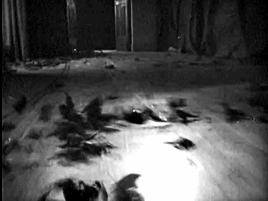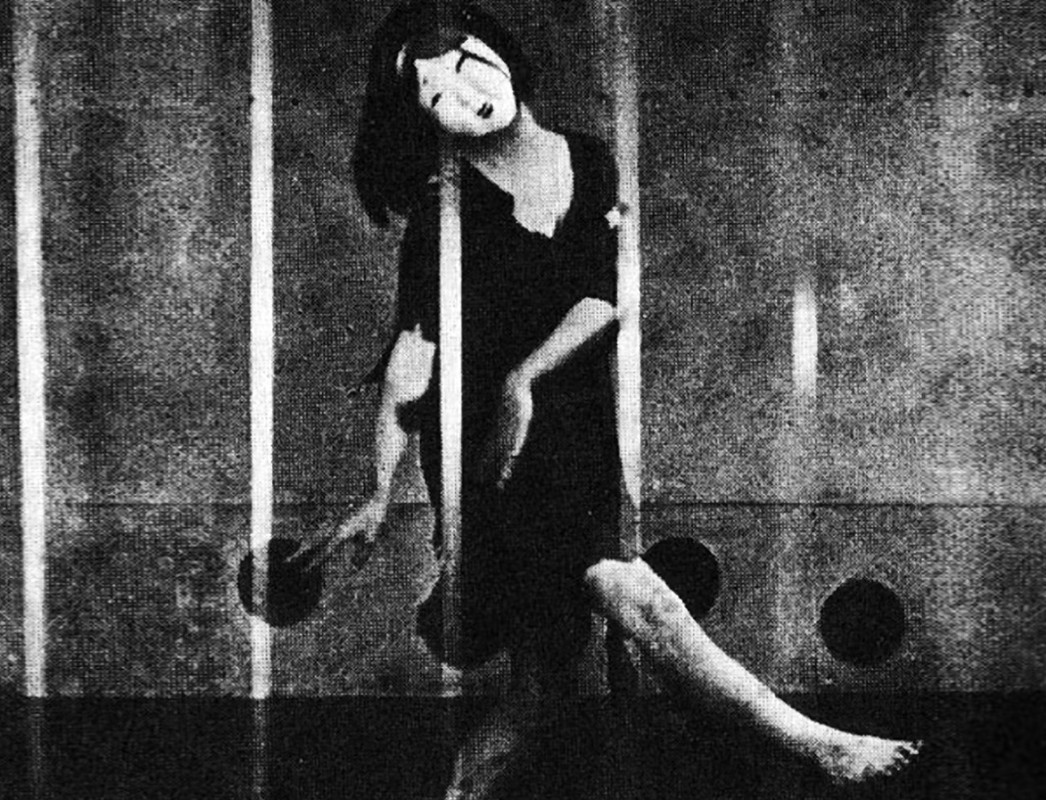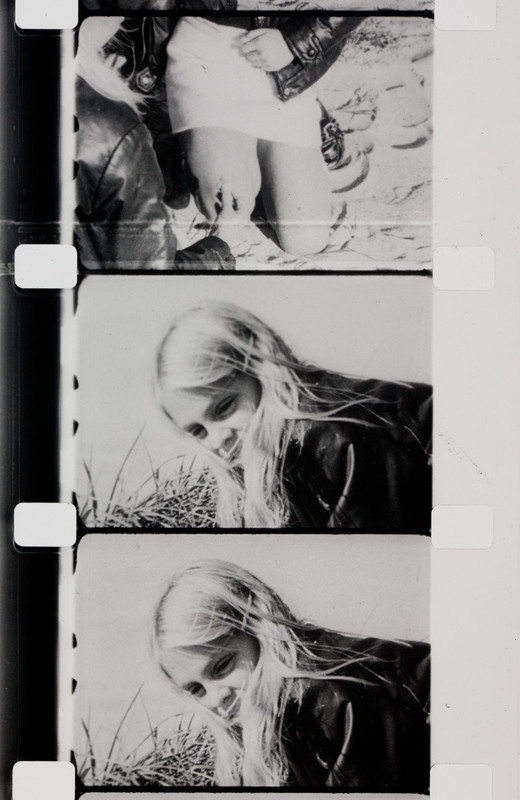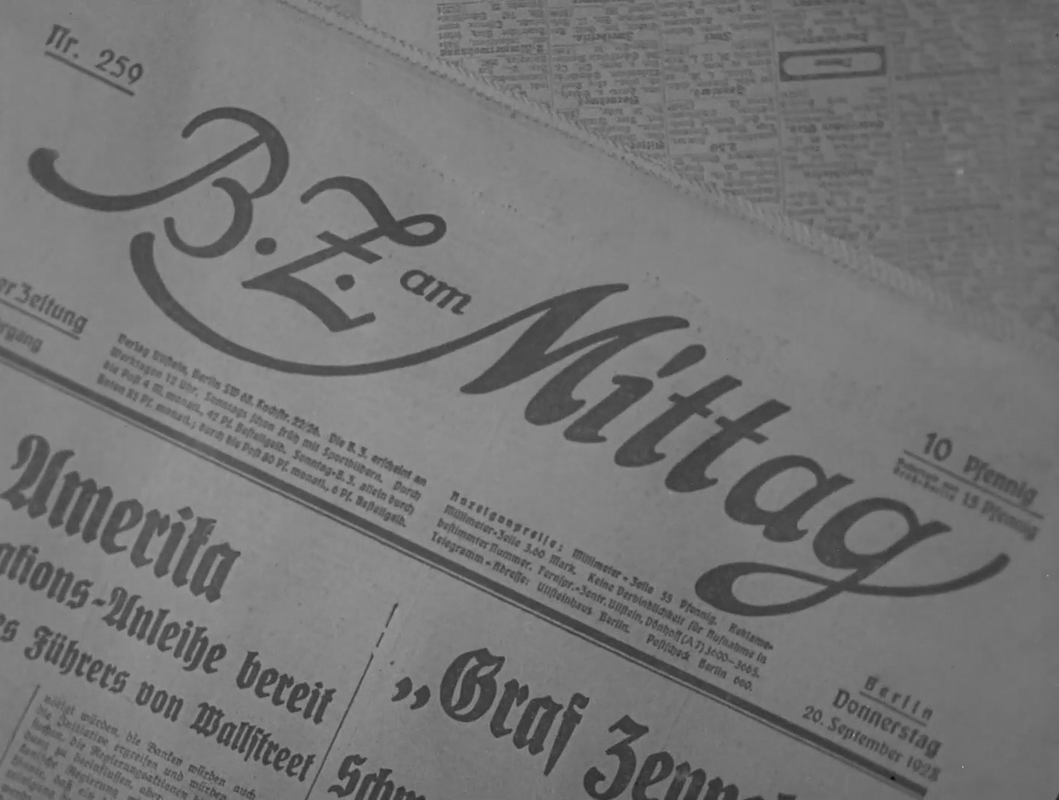“Laugh, my friends. Laugh with me, laugh for me, because I dream for you.”Le voyage dans la lune [A Trip to the Moon] (Georges Méliès, 1902)
Dec
19
Apollo 17
.gif)
A gif from the hand-coloured edition that is now in the Filmoteca de Catalunya. Poor Mister Moon has the adventures' rocket stuck in his eye. DPs: Théophile Michault & Lucien Tainguy.
The Moon (any moon) to commemorate the end of the final man-manned moon landing.
– Georges Méliès, 1937
In true Méliès style, a wild menagerie of showgirls and scientists meet on the Moon in this groundbreaking sci-fi spectacle.
SilentFilm
The Automatic Motorist (Walter R. Booth, 1911)
Dec
17
Saturnalia
.jpg)
While on the ringed planet, they pick up a cop to save him from spear-wielding rascals, but he elopes with the planet's fairy. Look at those lovebirds on the rings of Saturn!
A planet with rings for Saturnalia
Two lovely newlyweds and their robot chauffeur take a trip to Saturn for their honeymoon, followed by a jolly ride under the sea. A remake of Booth's own The '?' Motorist from 1906.
“Now consummate the sacrifice in your throat of flame, o father and mother, o god and goddess, o father and mother, o father and son, o god and goddess! Voracious creator! Roaring ardent hunger…” Cabiria (Giovanni Pastrone, 1914)
Dec
5
.png)
The gigantic entrance to the Temple of Moloch in Carthage. Like the entrance to Luna Park Sydney, it's appearance is based on a hellmouth. DPs: Augusto Battagliotti, Eugenio Bava, Natale Chiusano, Segundo de Chomón, Carlo Franzeri & Giovanni Tomatis.
A temple*
The world's first epic film and the debut of – the later hugely popular – strongman Maciste.
* the Bales 2025 Film Challenge for December has a few dateless themes. This is one of them.
München-Berlin Wanderung [Walking from Munich to Berlin] (Oskar Fischinger, 1927)
Nov
20
.png)
A bunch of Buben take a moment to pose between troublemaking. DP: Oskar Fischinger.
A journey or road trip*
Four weeks in four minutes, spanning decades in its disruptive form.
* the Bales 2025 Film Challenge for November is, again, not date-based, but follows a sloppy schmaltzy all-American Thanksgiving-y narrative. Trying to make it work my way.
”'M. Valdemar,' I said, 'are you asleep?' He made no answer, but I perceived a tremor about the lips, and was thus induced to repeat the question, again and again. At its third repetition, his whole frame was agitated by a very slight shivering; the eye-lids unclosed themselves so far as to display a white line of the{n} ball; the lips moved sluggishly, and from between them, in a barely audible whisper, issued the words: 'Yes; — asleep now. Do not wake me! — let me die so!'” Il caso Valdemar [The Facts in the Case of M. Valdemar] (Gianni Hoepli + Ubaldo Magnaghi, 1936)
Oct
24

M. Valdemar on his deathbed.
[A] favourite horror movie overall*
– Edgar Allan Poe, The Facts in the Case of M. Valdemar (1845) (via)
A man agrees on being hypnotised while in the state of dying. This particularly haunting and efficiently gory film – the first in the genre – is the result.
* the Bales 2025 Film Challenge for October is horror-themed as opposed to date-based, and is all about favourites. Expect non-horror and films I believe to be relevant instead.
“Everything in this masterpiece contributes to its unity: the absolute mastery of editing and rhythm; slow motion, superimpositions, tracking shots, the mobile camera all play their roles and never gratuitously. The photographic quality, worthy of the most learned German operators, the lighting of the sets which envelops them in mystery, the sets themselves, neither realistic nor stylized, but as if sketched; the acting neither realistic nor expressionist, and yet adapted to the fantastic, to the violence; to the pauses; to the blur.” La chute de la maison Usher [The Fall of the House of Usher] (Jean Epstein, 1928)
Oct
21

A rapid tracking shot along a dark corridor. Dead leaves follow the camera (via). DPs: Georges Lucas & Jean Lucas.
A favourite horror film adapted from a book or short story*
– Henri Langlois, via
A groundbreaking expressionist interpretation of Poe's inner horrors. Many of the tropes so common in later horror films, are fully fledged and present here.
* the Bales 2025 Film Challenge for October is horror-themed as opposed to date-based, and is all about favourites. Expect non-horror and films I believe to be relevant instead.
“Strange things are happening today.” Au secours ! [Help!] (Abel Gance, 1924)
Oct
18
Au secours !

A rather tall ghost struts along a nonplussed Max. DPs: Émile Pierre, André-Wladimir Reybas & Georges Specht.
A [favourite] horror comedy*. This post goes out to Max Linder, who – together with his wife Hélène “Ninette” Peters – took his own life 100 years ago, on October 31, 1925.
Max (Max Linder) bets that he can spend one whole hour in a haunted castle without calling for help. In face of all the (in camera!) terrors, Max faces his fears with ease. Until, just minutes before the clock strikes midnight, the phone rings.
– title card
And there was this other bet. One between Linder and director Abel Gance. Linder bet that Gance would not be able to shoot a movie in only three days. With ghosts, skeletons, and wildlife galore, the result is a delightful Grand Guignol à la Max.
* the Bales 2025 Film Challenge for October is horror-themed as opposed to date-based, and is all about favourites. Expect non-horror and films I believe to be relevant instead.
狂った一頁 [Kurutta ichipėji / A Page of Madness] (Teinosuke Kinugasa, 1926)
Oct
14
silent cinema

A masked inmate (Eiko Minami) dances. The shot of the dancer is superimposed over a shot of her cel's bars, putting the viewer in the position of the husband witnessing – or is he hallucinating – an inescapable nightmare (via). DP: Kōhei Sugiyama.
A [favourite] silent horror film*
Incomplete and, despite the generally accepted popular Occidental opinion, not a horror film. Oh, to have seen this narrated by Musei Tokugawa…
* the Bales 2025 Film Challenge for October is horror-themed as opposed to date-based, and is all about favourites. Expect non-horror and films I believe to be relevant instead.
La plage 23 septembre 1971 + 18° (Paul-Armand Gette, 1971)
Sep
23
1971

A filmstrip with three stills. The first one is a shot from above. We seen a young woman's thighs in a short skirt. She's kneeling down in the sand. Someone's hand hovers above one of her knees. The both wear matching leather jackets. Still two and three are merely identical; a young blond woman looking sideways. Behing her tall dune grass. Image source
Die Republik der Backfische [The Republic of Flappers] (Constantin J. David, 1928)
Sep
20
1928

The Berliner Zeitung (a rag of a paper that's still around to this day) of September 20, 1928. It blares something about America and Graf Zeppelin, the then-new airship. DP: Mutz Greenbaum.
Depending on the language version you watch, you'll see a 1928 newspaper headline dated September 20 (a Thursday), January 10 (a Tuesday), or January 9 (a Monday).